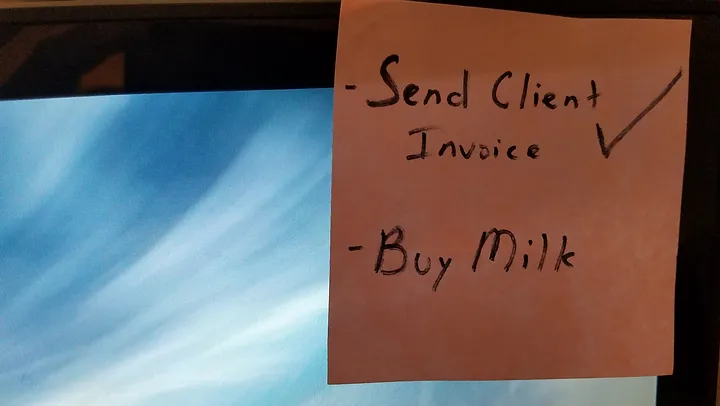There are more Unified Communications (UC) features bundled with VOIP services than most people can count. Many providers have such a litany of options that you would think you could fire half of your staff based on what is included in some of these feature lists, (FYI…very bad idea!). I’m going to educate you on a category which is of considerable value, CRM Integration.
How many times has a client called, asking for a task update, and the delay pulling up their account information in whatever disparate system(s) you use, to keep records and manage tasks for that client, leads to asking to call them back in a couple/few minutes? Also, by “system(s),” I’m amalgamating spreadsheets, Word docs, emails, Windows Sticky Notes, Post-it notes (…you know you use those…)…oh and that CRM system you pay for every month that you haven’t spent time learning how to use.

“Oh crud, I think I’m out of Post-it’s…”
A big question we often ask ourselves is, “Am I working for this technology or is this technology working for me?” Business owners often feel, “If I’m paying $X amount per user, per month for a technology, but it’s not making my life any easier, why am I paying for it in the first place?” That’s an emotional but fair question. The resolution to this will come from an understanding that no communication technology is meant to work independently or in a vacuum. Each works best when part of a collaborative system, so the sharing of information between business processes becomes 1. Streamlined 2. Faster and 3. More Efficient.
By linking Hosted Voice phone service to CRM software, that collaborative system is created. Business processes are improved because each technology talks to the other. Below is clear scenario of how this works when the technology is properly set up and a client calls in…
- Screen Pop, where the client’s account record automatically opens on the computer screen based on Caller ID.
- Outstanding tasks, service history, email contact history, billing records, contract statuses, etc. are immediately accessible.
- Call notes, viewing, creating or closing tasks, contact management and more can take place, with a big reduction in manual entry.
- Coworkers can be engaged through integrated instant messaging for task management or client service clarifications…all with a history tied into the CRM records.
General CRM Integration examples include Salesforce, Hubspot, Microsoft Dynamics, Zoho, SugarCRM, Zendesk and more. The Insurance Industry is a great vertical example, because many VOIP providers have CRM integrations with their industry specific software such as Applied Systems, HawkSoft, AMS360 and more.
Straightforward technology integration, as detailed in this write up, provides a tremendous return in investment due to the increase in the professional nature of client management. Clients are happier, employees are more efficient and improved business process leads to more profitability.
Don’t get me wrong though…none of us will ever stop sticking pink Post-its to our computer screens…

